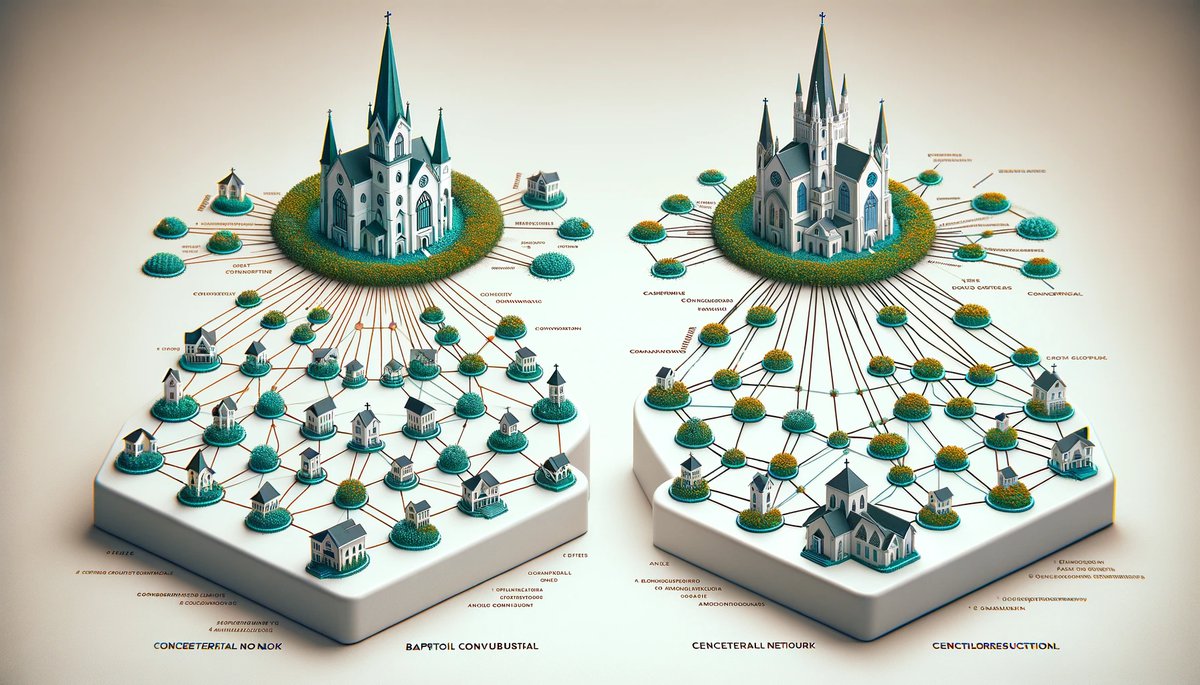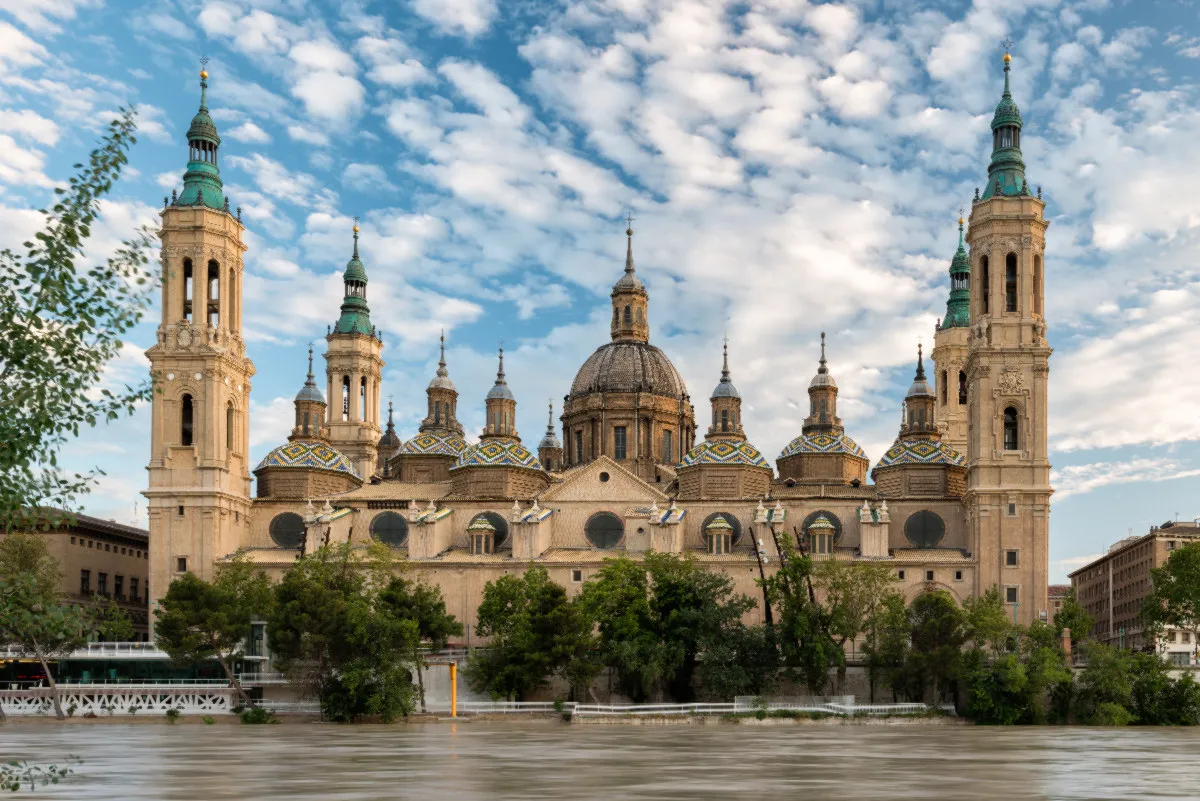Home>Theology and Spirituality>What Is The Difference Between Catholic And Christian Baptism


Theology and Spirituality
What Is The Difference Between Catholic And Christian Baptism
Published: March 1, 2024
Jason DeRose, Managing Editor at Christian.net, uses his expertise in religion and journalism to deepen understanding of faith's societal impacts. His editorial leadership, coupled with a strong academic background, enriches the platform’s diverse content, earning him recognition in both journalism and religious circles.
Discover the key distinctions between Catholic and Christian baptism in this comprehensive guide. Explore the theological and spiritual variances between the two sacred rituals.
(Many of the links in this article redirect to a specific reviewed product. Your purchase of these products through affiliate links helps to generate commission for Christian.net, at no extra cost. Learn more)
Table of Contents
Introduction
What is the difference between Catholic and Christian baptism? This question often arises due to the confusion surrounding the various denominations within Christianity. While Catholicism is a branch of Christianity, there are distinct differences in the practice and theology of baptism between Catholics and other Christian denominations. In this article, we will explore the historical background, theological variances, and the rituals and practices associated with Catholic and Christian baptism. Understanding these differences can provide insight into the diverse beliefs and traditions within the Christian faith.
Historical Background of Catholic Baptism
-
Early Christian Practices: The roots of Catholic baptism can be traced back to the early Christian Church. In the first few centuries after the death of Jesus Christ, baptism was primarily administered to adult converts. However, as the Church grew and infant baptism became more common, the sacrament took on a new significance within the Catholic tradition.
-
Development of Sacramental Theology: The concept of sacraments, including baptism, became more formalized in the Catholic Church during the medieval period. This led to the establishment of specific rituals and liturgical practices associated with baptism, emphasizing its role in initiating individuals into the faith and cleansing them from original sin.
-
Council of Trent: The Council of Trent, convened in the 16th century in response to the Protestant Reformation, reaffirmed the Catholic Church's teachings on baptism. It emphasized the necessity of baptism for salvation and the incorporation of individuals into the body of Christ, the Church.
-
Sacramental Regeneration: Catholic theology holds that baptism is not merely a symbolic act but a sacrament that imparts grace and initiates a process of spiritual rebirth. This belief in baptismal regeneration sets the Catholic understanding of the sacrament apart from many other Christian denominations.
-
Liturgical Practices: The Catholic Church has developed specific liturgical rites for baptism, including the use of holy water, anointing with chrism, and the recitation of prayers and blessings. These rituals reflect the Church's emphasis on the sacramental nature of baptism and its role in the life of the believer.
Understanding the historical background of Catholic baptism provides insight into the development of its theology and practices within the broader context of Christian history.
Historical Background of Christian Baptism
-
Early Christian Practices: The origins of Christian baptism can be traced back to the early days of the Christian Church. In the New Testament, the act of baptism is depicted as a significant rite of passage for believers, symbolizing their identification with the death, burial, and resurrection of Jesus Christ. Early Christian communities practiced baptism as a public declaration of one's faith and commitment to the teachings of Jesus.
-
Biblical Accounts: The Gospels and the Book of Acts provide accounts of baptism being administered by John the Baptist and later by Jesus' disciples. The baptism of Jesus himself by John the Baptist serves as a foundational event in Christian theology, emphasizing the importance of this ritual within the faith.
-
Spread and Diversification: As Christianity spread throughout the Roman Empire and beyond, diverse practices and understandings of baptism emerged within different cultural and theological contexts. While some Christian communities continued the tradition of baptizing adult converts, others began to incorporate the practice of infant baptism, leading to variations in the administration and significance of the sacrament.
-
Patristic Era: During the early centuries of Christianity, known as the Patristic era, theologians such as Augustine of Hippo and Origen of Alexandria contributed to the theological understanding of baptism. They emphasized its role in the forgiveness of sins, spiritual rebirth, and incorporation into the body of Christ, laying the groundwork for diverse interpretations of the sacrament within Christian traditions.
-
Reformation and Beyond: The Protestant Reformation in the 16th century brought about further theological reflection on baptism, with reformers such as Martin Luther and John Calvin offering new perspectives on its meaning and practice. This period witnessed the proliferation of various Christian denominations, each with its distinct beliefs and rituals related to baptism.
Understanding the historical background of Christian baptism illuminates the diverse interpretations and practices of this sacrament within the broader tapestry of Christian history.
Theological Differences Between Catholic and Christian Baptism
-
Sacramental Regeneration: One of the primary theological distinctions between Catholic and many other Christian denominations lies in the understanding of baptismal regeneration. Catholic theology asserts that baptism is not merely a symbolic act but a sacrament that imparts grace and initiates a process of spiritual rebirth. This belief in the efficacy of baptism to cleanse the individual from original sin and initiate them into the life of grace sets the Catholic understanding of the sacrament apart from many other Christian traditions.
-
Infant vs. Adult Baptism: Another significant difference is the practice of infant baptism. While Catholicism emphasizes the importance of baptizing infants as a means of initiating them into the Church and cleansing them from original sin, many other Christian denominations, particularly those stemming from the Protestant Reformation, practice believer's baptism, which is the baptism of individuals who are old enough to make a conscious decision to follow Christ. This variance in the timing and purpose of baptism reflects differing theological perspectives on the nature of faith and the role of the sacrament in the life of the believer.
-
Role of the Church: Catholic theology places a strong emphasis on the role of the Church as the mediator of grace, including the administration of sacraments such as baptism. The Catholic Church teaches that baptism is necessary for salvation and that it is through the Church's sacramental ministry that individuals are incorporated into the body of Christ. In contrast, many other Christian traditions emphasize a more direct, personal relationship with God and view baptism as an outward expression of an inward faith, with the Church playing a supportive rather than a mediating role in the sacramental process.
-
Understanding of Original Sin: The Catholic doctrine of original sin significantly influences its theology of baptism. According to Catholic teaching, baptism is the means by which the stain of original sin is removed, and the individual is reborn as a child of God. This understanding of baptism's role in addressing the inherited sinful nature of humanity shapes the Church's approach to the sacrament. In contrast, other Christian denominations may hold differing views on original sin and its implications for the practice and significance of baptism.
-
Efficacy of the Sacrament: Catholic theology affirms the efficacy of baptism as a means of imparting grace and initiating the believer into the life of the Church. The sacramental nature of baptism, as understood within Catholicism, emphasizes its role in the process of salvation and sanctification. In contrast, some other Christian traditions may view baptism as a symbolic act of obedience and public declaration of faith, with its efficacy being rooted in the individual's personal commitment rather than the sacramental action itself.
Understanding these theological differences sheds light on the diverse perspectives and beliefs within the broader Christian community, highlighting the rich tapestry of traditions and interpretations that have emerged around the sacrament of baptism.
Rituals and Practices in Catholic Baptism
-
Preparation and Rite of Welcome: Before the actual baptism takes place, the Catholic Church emphasizes the importance of preparation for the sacrament. This often involves a period of instruction and spiritual formation for the parents of the child to be baptized, as well as for adult candidates seeking baptism. The Rite of Welcome marks the formal acceptance of the individual or child into the catechumenate, a process of formation and education in the faith that precedes baptism.
-
Baptismal Water and Blessings: The use of holy water is a central element in Catholic baptism. The water is blessed by a priest or deacon and serves as a symbol of purification and new life. During the baptismal rite, the candidate is either immersed in the water or has water poured over their head while the celebrant invokes the Trinitarian formula, stating, "I baptize you in the name of the Father, and of the Son, and of the Holy Spirit."
-
Anointing with Chrism: Following the baptismal immersion or pouring, the candidate is anointed with chrism, a consecrated oil signifying the gift of the Holy Spirit. This anointing is accompanied by the words, "As Christ was anointed Priest, Prophet, and King, so may you live always as a member of His body, sharing everlasting life."
-
White Garment and Baptismal Candle: Symbolic elements such as the white garment and baptismal candle are presented to the newly baptized as signs of their new life in Christ. The white garment represents purity and the putting on of Christ, while the lit baptismal candle symbolizes the light of Christ entering the life of the baptized, dispelling the darkness of sin.
-
Renewal of Baptismal Promises: In the case of infant baptism, the parents and godparents renew their own baptismal promises on behalf of the child, affirming their commitment to raise the child in the Christian faith. For adult candidates, the baptismal promises are made personally, signifying their conscious decision to embrace the beliefs and practices of the Catholic Church.
-
Eucharistic Celebration: The sacrament of baptism is often integrated into the celebration of the Eucharist, emphasizing the unity of the sacraments within the life of the Church. The newly baptized individual or child is welcomed into the community of believers through participation in the Eucharistic liturgy, further reinforcing their incorporation into the body of Christ.
The rituals and practices in Catholic baptism reflect the Church's rich sacramental theology and its emphasis on the transformative power of the sacraments in the life of the believer. These elements contribute to the profound significance of baptism within the Catholic tradition, marking the initiation of individuals into the community of faith and the grace-filled life of the Church.
Rituals and Practices in Christian Baptism
-
Believer's Baptism: In many Christian denominations, baptism is reserved for individuals who have made a personal profession of faith in Jesus Christ. This practice, known as believer's baptism, emphasizes the voluntary nature of the sacrament and the individual's conscious decision to follow Christ. Candidates for baptism undergo a period of instruction and spiritual preparation, culminating in a public declaration of their faith before being baptized.
-
Immersion, Pouring, or Sprinkling: The mode of baptism varies among Christian traditions. Some denominations, such as Baptists and Churches of Christ, practice baptism by immersion, wherein the candidate is fully submerged in water to symbolize the death and resurrection of Jesus Christ. Others, including many Protestant and Anglican churches, practice baptism by pouring or sprinkling water over the candidate's head, signifying the cleansing and renewal associated with the sacrament.
-
Public Affirmation of Faith: Christian baptism often involves a public ceremony in the presence of the faith community. This public affirmation of faith serves as a witness to the individual's commitment to Christ and their desire to be identified with the body of believers. It also provides an opportunity for the congregation to offer support and encouragement to the newly baptized individual as they embark on their spiritual journey.
-
Symbolic Meaning: Baptism in Christian traditions symbolizes various spiritual realities. It represents the forgiveness of sins and the washing away of the old self, as well as the individual's identification with the death, burial, and resurrection of Jesus Christ. The act of baptism is seen as a transformative experience, marking the beginning of a new life in Christ and the indwelling of the Holy Spirit in the believer.
-
Baptismal Regeneration: While some Christian denominations view baptism as a symbolic act of obedience and public declaration of faith, others, such as the Eastern Orthodox Church and some Anglican traditions, ascribe a sacramental significance to baptism. They believe that through the sacrament, the individual is united with Christ, receives the gift of the Holy Spirit, and is incorporated into the body of believers, signifying a form of spiritual rebirth and regeneration.
-
Celebration and Communal Participation: Christian baptism is often celebrated within the context of a worship service, with the faith community gathering to witness and participate in the sacramental event. The congregation plays a role in upholding and supporting the newly baptized individual, recognizing them as a member of the body of Christ and committing to walk alongside them in their spiritual journey.
Understanding the rituals and practices in Christian baptism provides insight into the diverse expressions of this sacrament within the broader Christian community. These practices reflect the rich tapestry of beliefs and traditions that have emerged around the significance of baptism in the life of the believer.
Views on Original Sin and Baptismal Regeneration
Catholic Perspective
In Catholic theology, the doctrine of original sin plays a central role in shaping the understanding of baptismal regeneration. The concept of original sin, stemming from the disobedience of Adam and Eve in the Garden of Eden, is believed to have resulted in the fallen nature of humanity, inherited by all individuals. Baptism is viewed as the means by which the stain of original sin is washed away, and the individual is reborn as a child of God. This understanding emphasizes the salvific and regenerative power of baptism, as it is seen as the gateway to a life of grace and communion with God. The Catholic Church teaches that through baptism, the individual is cleansed from the effects of original sin and incorporated into the body of Christ, marking the beginning of their journey as a member of the Christian community.
Protestant and Evangelical Perspectives
Many Protestant and evangelical denominations hold differing views on original sin and its relationship to baptism. While the concept of original sin is acknowledged within these traditions, the emphasis is often placed on the personal responsibility of each individual for their own sinfulness, rather than the inherited guilt of original sin. In the context of baptism, believer's baptism is often practiced, wherein individuals publicly profess their faith in Jesus Christ and undergo baptism as a symbolic act of obedience and identification with Christ's death and resurrection. Baptism is seen as an outward expression of an inward faith, symbolizing the believer's union with Christ and their commitment to a life of discipleship. The sacramental efficacy of baptism is often understood in a symbolic and spiritual sense, as a public testimony of the believer's new life in Christ rather than as a means of imparting grace ex opere operato, or by the mere performance of the sacramental act.
Eastern Orthodox Perspective
Within the Eastern Orthodox tradition, baptismal regeneration is understood in a manner similar to the Catholic perspective. The sacrament of baptism is seen as the means by which the individual is united with Christ, receives the gift of the Holy Spirit, and is incorporated into the body of believers. The doctrine of original sin is acknowledged, and baptism is viewed as the remedy for the ancestral sin inherited from Adam and Eve. Through the sacrament of baptism, the individual is cleansed from the effects of original sin and initiated into the life of the Church, participating in the death and resurrection of Christ and receiving the promise of eternal life. The emphasis on the transformative and regenerative nature of baptism underscores its significance as the entry point into the community of faith and the life of grace.
Understanding the diverse views on original sin and baptismal regeneration provides insight into the theological nuances and doctrinal differences that exist within the Christian tradition. These perspectives reflect the rich tapestry of beliefs and interpretations surrounding the sacrament of baptism and its role in the spiritual journey of believers.
Conclusion
In conclusion, the differences between Catholic and Christian baptism encompass historical, theological, and ritual aspects that reflect the diverse expressions of the sacrament within the broader Christian community. The historical background of Catholic and Christian baptism reveals the evolution of the sacrament within different cultural and theological contexts, shaping distinct practices and beliefs. The theological variances, particularly concerning sacramental regeneration, infant versus believer's baptism, and the role of the Church, highlight the nuanced perspectives on the nature and efficacy of baptism within Catholicism and other Christian denominations. The rituals and practices associated with Catholic and Christian baptism underscore the rich symbolism and spiritual significance attributed to the sacrament, emphasizing its role in initiating individuals into the faith community and signifying their new life in Christ. Furthermore, the views on original sin and baptismal regeneration elucidate the theological underpinnings that inform the understanding of baptism within Catholic, Protestant, and Eastern Orthodox traditions. Overall, the exploration of these differences provides a deeper appreciation for the diverse interpretations and practices of baptism, contributing to the rich tapestry of beliefs and traditions within the Christian faith.













